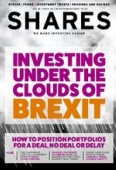Archived article
Please note that tax, investment, pension and ISA rules can change and the information and any views contained in this article may now be inaccurate.
Self-employed pension saving: is it worth it?

The UK is in recovery mode from a looming retirement crisis. Automatic enrolment has been introduced for those in employment, nudging millions to save for their future for the first time.
But if you’re one of the near-5m self-employed people living and working in the UK, you’ll need to take responsibility yourself.
According to the Office for National Statistics, just 14% of self-employed people are saving into a pension. That means around six out of seven risk facing a serious income shortfall when they want to stop working unless they take action.
The flexibility and choice pensions offer means they are increasingly attractive to all – including those who work for themselves. Furthermore, there are various features that could be particularly appealing to the self-employed.
TAX RELIEF BOOST
One of the biggest benefits of making personal savings in a pension (e.g. a SIPP) is the bonus added through tax relief.
Tax relief at 20% is automatically added, while higher (40%) or additional (45%) rate taxpayers can claim up to an extra 20% or 25% through their tax return.
The accompanying table shows you how much saving £100 in a SIPP will cost.
PAYING YOUR PROFITS INTO A PENSION
If you are a business owner, you might consider paying directly from your business into your pension.
Pension contributions are business expenses, so your company would get corporation tax relief of 19%. If you chose to make a payment to your pension rather than take profits as dividends then you also save on income tax.
Note this option isn’t available if you’re a sole trader, although you can still make personal pension contributions.
PENSIONS ‘CARRY FORWARD’
There is another way the self-employed and business owners could further boost their pension fund.
Carry forward is particularly useful for anyone who has set up a pension but hasn’t been able to use up their available allowance. This is often the case for people who may need to prioritise investing in their business in the short-term over saving for the future.
Carry forward is essentially a flexibility which allows you to make up for lost time. Provided you were a member of a pension scheme at the time, you are allowed to utilise up to three years of unused annual allowances in the current tax year.
That means you could benefit from an annual allowance of up to £160,000 using carry forward, including tax relief.
FLEXIBILITY AT AGE 55
Historically a major drawback of pensions for self-employed people was the perceived lack of flexibility.
The old ‘locked-box’ structure – where most people ended up buying an annuity at age 65 – might not have fit into their plans.
Savers can now choose how to spend their retirement funds from age 55 (or age 57 from 2028). There are three main options:
Drawdown: take up to 25% of your fund tax-free, with the rest taxed in the same way as income when you take it out. Your fund will stay invested and you’ll need to think about a range of things including how much risk you want to take and how much income you can safely withdraw;
Ad-hoc pension lumps sums: take individual chunks out of your pension with 25% of each chunk tax-free and the rest taxed in the same way as income;
Annuity: hand your pension pot to an insurer and receive a guaranteed income stream in return. These can be over a fixed-term or for life, and you can add things like pensions for your spouse and inflation protection (although this will lower your starting income).
For many people a combination of these income routes will provide the right retirement solution.
And while pensions are first and foremost designed to provide an income in retirement, ultimately it’s your money and you can use it how you want.
Case study
Emma set up a small bakery in her hometown four years ago. She now employs two people, is a higher-rate taxpayer and in the 2019/20 tax year expects to turn a profit of £20,000.
After corporation tax of 19%, Emma could take a dividend of up to £16,200.
Emma would then receive the first £2,000 of the dividend (the 2019/20 dividend allowance), and the remainder would be subject to income tax at 32.5%, meaning a total of £11,585 in her pocket.
However, if her business paid the entire £20,000 directly into a pension, no corporation or dividend tax would be payable. The money will also be able to grow tax-free, with tax only coming into play when she comes to make a withdrawal from her pension.
Important information:
These articles are provided by Shares magazine which is published by AJ Bell Media, a part of AJ Bell. Shares is not written by AJ Bell.
Shares is provided for your general information and use and is not a personal recommendation to invest. It is not intended to be relied upon by you in making or not making any investment decisions. The investments referred to in these articles will not be suitable for all investors. If in doubt please seek appropriate independent financial advice.
Investors acting on the information in these articles do so at their own risk and AJ Bell Media and its staff do not accept liability for losses suffered by investors as a result of their investment decisions.

 magazine
magazine










